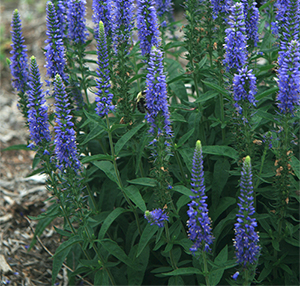Some markets are slow and growers have to hold their perennials, sometimes for weeks.

Problem: Some perennials, especially spring bloomers like Aquilegia and Iberis, only flower for a period of time and are done. What is the best way to hold your perennial crops that are not selling? Members of the Ball Technical Services Team have provided these resources for Holding and Delaying Crops.
For this blog, I'll share some of the strategies I've followed in the past...
Temperature: Drop your night temperatures generally down into the 40s if possible. Keep days as cool as possible. There are always exceptions! Watch for crops that don’t like it.
Provide high light and use natural photoperiod (no long day lighting)
Reduce feed, but don’t withhold feed. 100-150ppm N per week as needed. Use a formulation lower in phosphorous like 14-4-14 or 13-2-13. Phosphorous can cause stretch and soft growth. If you are losing color you can apply a feed such as 17-5-17 @200ppm.
Move crops outside if you can. Make sure plants are acclimated to cool temperatures already. If temperatures are forecast to go below freezing there are several options:
- Cover the crop with a frost blanket.
- Use sprinklers intermittently overnight to prevent frost and provide protection from freezing temps.
- If frost is on the foliage in the morning, wash off with water before sunrise to avoid leaf damage.
Use PGRs to slow your crop, but not stop it. Be aware that you are hoping a customer will be planting these plants is a matter of weeks and they have to readily grow out of any PGR you apply.
- Refer to the GrowerTalks PGR for perennials publication for strategies. Download a copy of the PDF here
- I prefer B-Nine at 3750-5000ppm mixed with Cycocel at 500ppm. Be aware of environment when applying to avoid burn and lack of control.
- Sumagic as a spray is very effective on many perennials, though be aware it can stunt some. Always trial and start with lower rates.
- I do not like Bonzi drenches as crops can sometimes not grow out of it easily.
Selectively trim or cut back crops that will come back into flower, such as lavender and veronica. If using this approach, it may be better to trim only part of the crop – unless the entire crop is looking unsaleable. Crops such as aquilegia, iberis and creeping phlox should not have flowers trimmed off.
At some point you may have to mitigate your losses and dump a crop if it is or will be bloomed out and will not re-flower this season. There may be time to replant if you think the market will be there. Perennials planted this time of year come into flower more quickly.
If you've 45 minutes to spare, take a listen to the panel discussion below from the Ball Technical Services Team, moderated by Bill Calkins. It features yours truly and my colleagues Gary Vollmer of Selecta One and Jerry Gorchels of PanAmerican Seed. It's a well-rounded talk about the current situation growers find themselves in as we look to hold crops for sale.